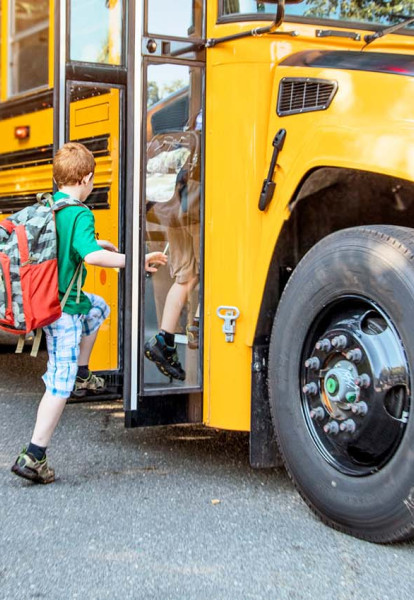
Seat Belts in School Buses: Are They Safer?
Seat belts on a school bus sound like a good idea. Presumably, they would reduce injuries and keep children safe. That’s exactly what Connecticut Governor Jodi Rell was hoping for when she signed legislation earlier this year offering incentives to communities that equip their school buses with seat belts.
The bill was prompted after a 16-year-old Connecticut student was killed in January 2010 when the school bus he rode in, not equipped with seat belts, collided with another motor vehicle and rolled down an embankment.
The bill, offered as an incentive rather than a requirement, hopes schools will jump on board by incorporating the safety precaution. Bus companies opting into the program will have a portion of the sales tax they pay waived for each school bus. State funding for the program will be generated from a fee increase for vehicle registration of drivers with suspended or revoked licenses.
The Connecticut School Transportation Association (COSTA) disagrees with the bill, arguing that seat belts on buses are unnecessary and even potentially hazardous. COSTA fears that students trapped in seat belts may not be able to extricate themselves in evacuation situations. Furthermore, if bus drivers are obligated to ensure that every student wear a seat belt, they may have to periodically stop the bus to ensure all students are secure, thus potentially exposing the bus to danger.
Other skeptics point out the seat belts would have to be continually adjusted and that most school buses are outfitted with well-padded and energy-absorbing seats that adequately protect children anyway.
According to the National Highway Traffic Safety Association (NHTSA), large school buses are among the safest of all forms of transportation. From 1994 to 2005, roughly 26 traffic-related deaths per year involved school buses, and only six of those fatalities were schoolchildren. The NHTSA, however, maintains that lap and shoulder belts may reduce injuries by about 45 percent.
Forty-four states, as well as the federal government, have not required that large school buses have seat belts. Forcing schools to make costly adjustments and possibly imposing on them additional liability may be part of the rationale for leaving this issue up to the individual states. Also, the low incidence of school bus fatalities has not led to an outcry for a measure that may not reduce a risk already at a very low level.
Get in Touch
Schedule a Free Initial Consultation
At Kennedy, Johnson, Schwab & Roberge, P.C., we handle all cases on a contingency fee basis. This means that we do not get paid unless and until you receive a settlement or a jury award.
Schedule a free, confidential consultation with a skilled Connecticut personal injury lawyer today.








